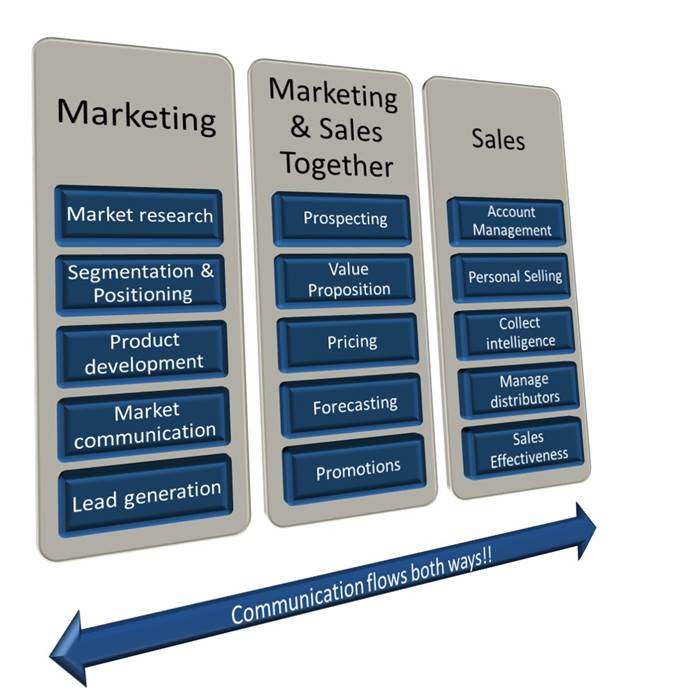
Photo courtesy of StockSnap on Pixabay
 In any company, the marketing and sales functions depend on each other. Both want to find, convert and keep customers. The main difference is in the time horizon. Sales deals with the here and now. Marketing deals with tomorrow and the day after tomorrow, figuratively speaking.
In any company, the marketing and sales functions depend on each other. Both want to find, convert and keep customers. The main difference is in the time horizon. Sales deals with the here and now. Marketing deals with tomorrow and the day after tomorrow, figuratively speaking.
In the decorative concrete industry, the two functions need to be aligned and work closely together. Too often I see marketing doing its own thing, while sales complains about few leads and of those, poor quality. So, what can we do to remedy this problem?
It’s easy for top management to postulate cooperation but harder to make it work in the real world. On a business’s commercial side, a good dialogue about dividing up work can start with a conversation about roles.
Marketing works on a longer term and should always have a market-based view. The view should focus on strategy for product groups, as well as for different market segments. Daily work involves research, analysis and putting processes in place for lead generation, lead qualification and more.
The sales function operates on a shorter horizon and has a more tactical, customer-focused view. Daily activities center on building and maintaining relationships with customers and distributors, and meeting sales targets.
Division of labor
Some commercial activities fall squarely on one function, while some fall on the other. The rest involves activities where collaboration is the best way to go.
When deciding who does what in commercial functions, I’ve made good use of this framework. (I adapted it from Andris Zoltners, the co-chairman of ZS Associates Inc., a global management consulting firm.)
Marketing and sales tasks
Marketers are well-equipped to research markets and new products. They look at competitors and formulate growth strategies to relieve customers’ pain points. They can segment the overall market into bite sizes, and come up with positioning and messaging for each segment.
Then they can develop or source new products that meet the customer’s needs. They can also put in place market communication and branding strategies to promote the offerings.
With this support from marketing, sales can focus on managing existing customers, making sales calls, and training customers on how to use equipment and select the right tool for the job. Keeping in touch with customers and providing great after-sales service make the selling job easier.
When out in the field (physically or virtually), sales reps can collect news about competitors and feed this to marketing. Developing and improving the selling process is a key job for sales management. If the company sells through dealers or manufacturers’ reps, it is best to manage this interface by sales to minimize channel conflicts.
Joint activities
Selection of both customers and prospects to go after is best done together. Sales and marketing should sit down and agree on the priority targets by geography, industry and job title. Marketing can look for these kinds of leads, and sales can agree to follow-up on leads in a timely manner. Heavenly harmony!
Another joint activity involves deciding on pricing policies for products and services. Value propositions will be most effective if they’re developed together. Moreover, consistent customer messaging is important for both marketing campaigns and sales calls.
Sales forecasting, a dreaded administrative task, squarely falls under the joint activity heading. The better the forecast, the larger the chance management will make resources available for initiatives in the future!
Communicate, communicate, communicate
For cooperation in the commercial function to be successful, it’s important there’s a free and open flow of information. And it needs to go both ways.
In practical terms, this means a good customer relationship management system is in place and is used by everyone. Management can also help by ensuring both scheduled and informal personal interaction takes place between sales management and marketing.
















